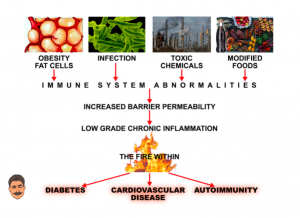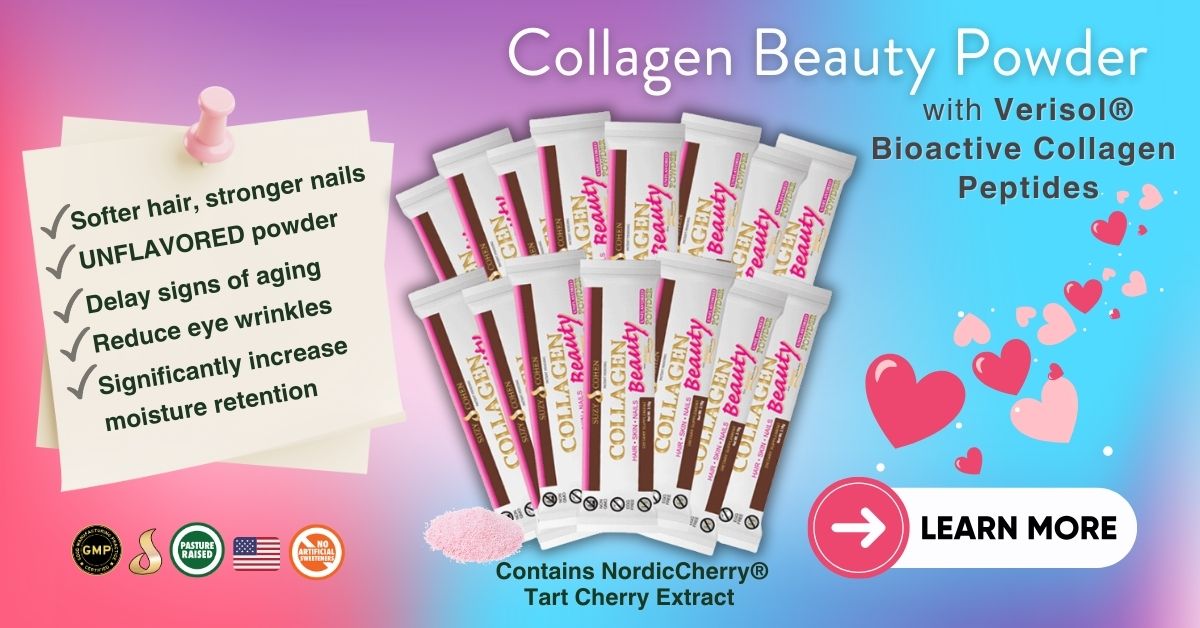It’s around this time of the year, when the nights draw in and I pull out my woolen sweaters and snow boots, that I usually notice a flurry of articles in the mainstream media about the importance of keeping our vitamin D level topped off. Vitamin D is your immune system’s best, but most little-known ally. There has been a huge upsurge of interest in vitamin D’s role in your health in recent years. Time magazine even listed “The Benefits of Vitamin D” on its list of Top Ten Medical Breakthroughs. I am going to show you how you can use this amazingly cheap vitamin to keep your immune system revved up this winter.
Back in the Day – Rickets
Vitamin D was first discovered in the late 1920’s after scientists observed that rickets (a disorder that leads to deformities of the bones and teeth) could be cured by taking cod liver oil, which we now know is rich in vitamin D. It was later discovered that we are able to make our own vitamin D, in the form of vitamin D3, when our skin is exposed to sunshine. Rickets used to be known as “the English disease,” and anyone who has tried to sunbathe under an overcast English winter sky can guess why!
Despite its name, vitamin D behaves more like a hormone than it does a vitamin. The biologically active hormone form is called calcitriol. One of its main jobs is to work with parathyroid hormone to keep levels of calcium in the blood balanced, like a thermostat. When blood levels of calcium drop too low, vitamin D triggers our bones to release calcium into the bloodstream, thus increasing the amount of calcium we absorb in our intestines.* On the other hand, when blood levels of calcium climb too high, vitamin D makes sure that less calcium is absorbed in the intestines and our bones take up more calcium.* This makes vitamin D essential for strong and healthy bones and teeth.* Vitamin D also helps regulate cell growth and activity, as well as helping us absorb phosphorus and make use of vitamin K.*

Immune System Balancing
I also want to make sure that you are up-to-date with what I think is vitamin D’s most exciting role yet. Studies are now being published thick and fast that demonstrate adequate vitamin D is essential to the correct functioning of our complex immune system.*
Vitamin D and Adaptive Immune Function.
The part of our immune system that “remembers” specific attackers so it can mount a faster defense next time these attackers are present is called the adaptive immune system. Vitamin D helps modulate the adaptive immune system by boosting our T cells, a type of white blood cell that patrols our bodies like soldiers, ready to destroy any dangerous cells they come across.* Researchers in Denmark recently made a truly incredible connection. For these T cells to be able to activate themselves and mount an attack, vitamin D must be present.* Without adequate vitamin D, our T cells are listless and don’t respond as they should to threats.*
Researchers hope this discovery will help us support our immune system more effectively. They also suggest that an awareness of vitamin D’s role can help scientists to develop new ways to support a person’s immune system to not over-react in cases of organ transplants and autoimmune diseases.
Keeping Our Innate Immune System Ship-Shape
The other part of our immune system is the innate immune system. This is our first line of defense against viruses, parasites, bacteria, and any other outside substances your immune system doesn’t like the look of. Imagine that you cut your finger while chopping broccoli. White blood cells that are standing guard quickly “sniff out” invading bacteria and rush to the site to neutralize these attackers using special chemicals your body makes. Having blasted the attackers, your white blood cells gobble them up in a process called phagocytosis. The redness and soreness that results – an inflammatory response – is a natural part of the innate immune response, as the immune system helps the white blood cells reach their targets by bringing more blood to the area.
Vitamin D supports your innate immune system in two ways.* First, a German study showed that vitamin D3 must be present so you can produce a vitally important substance called cathelicidin, which is secreted by immune cells in the epithelial surfaces of your respiratory tract, your GI tract, and your skin when they detect invading outside substances. In the delicate symphony that goes on in our bodies, when we don’t produce enough cathelicidin to kill off these invaders, then both the adaptive immune system and the innate immune system can become dysregulated. The German researchers suggest this vicious cycle can start with a vitamin D deficiency.* The second way vitamin D supports our innate immune system is by helping the phagocytes break down the nasty particles they have swallowed.*
Get my FREE ebook about how Vitamin D heals you by clicking on the image below!
Vitamin D Supports Healthy Immune Function*
We know that both the innate immune system and the adaptive immune system are involved in keeping us healthy. So how does your vitamin D status impact them both? It’s fascinating to remember that both sunlight and cod liver oil were used as treatments for tuberculosis way before the development of antibiotics. With today’s modern hygiene, we are much less vulnerable to being seriously harmed by infections than was our forbearers. Nevertheless, I’m willing to bet that every person reading this article has experienced the familiar runny nose and congestion, sneezing, and low-grade fever of the common cold. When you do catch a cold, the strength of your immune system will dictate how hard the cold hits you and how long it will last. Research shows that having enough vitamin D in your body means your immune system is much better equipped to fight back.*
A U.S. study of 198 healthy adults found that individuals who had blood levels of 38 nanograms per milliliter (ng/ml) or more of vitamin D enjoyed better health during the winter season.*
A 2012 study carried out – in of all places Mongolia! – during the freezing winter months compared vitamin D supplementation in children. Mongolian children, 247 of them, were divided into two groups and given a daily drink of either regular milk or milk fortified with 300 IU of vitamin D3. The children did not know which of the two milks they had received. Their parents were asked to report any adverse health conditions the children suffered during the winter months. By the end of the study, the kids who drank the regular milk had an average vitamin D blood level of 7 ng/ml, while the fortified-milk kids had an average level of 19 ng/ml. Compared with the plain-milk kids, the children who received the vitamin D-fortified milk reported significantly fewer adverse health conditions during the study period.*
Although I can’t make any promises that vitamin D will keep you hale and hearty all winter long, it sure looks like it’s able to help you better manage those miserable days on the couch sipping honey and lemon and sniffling into a wad of tissues.*
VDBP and Vitamin D
Vitamin D and its metabolites are toted around the body in a shuttle – think of it like a taxi. Vitamin D Binding Protein is the name of the taxi. It’s a tiny plasma protein that has many functions, but it’s most important duty is to transport vitamin D metabolites. You’ll see it abbreviated in the literature as VDBP – for Vitamin D Binding Protein. VDBP binds up vitamin D and hauls it around like a taxi. Liver disease will decrease the body’s level of VDBP. Trauma, surgery, and infections soak up VDBP. Your VDBP level can be measured by a simple blood test. Normal VDBP levels are considered to be in the range of 350-500 milligrams per liter.
Are You Protected?
There are so many reasons why many of us don’t have an optimal level of this wonderful vitamin D. Many of us live in northern latitudes, and so we don’t get many opportunities to feel that wonderful natural sunlight on our skin during the winter. Others spend too little time outdoors – either for health reasons or work schedules. Some of us tend to keep so covered up that we get only minimal direct sun exposure. Individuals who have darker skin tones are more at risk of vitamin D deficiency. Shockingly, even spending too much time in a big city where tall buildings block the sun’s rays or living under a cloud of smog in a severely polluted area can lead to a vitamin D deficiency.
Symptoms of vitamin D deficiency include feeling generally yucky and fatigued, feeling weak, having bone or muscle pain, and, worst case, having thinning bones and frequent fractures. Because rickets has long been eradicated, having a sub-optimal vitamin D level is not on the radar screen of many physicians, so don’t automatically expect your health-care provider to be keeping an eye on your vitamin D level. If you are concerned about your vitamin D status, then ask your health-care provider to check your blood level of 25-hydroxyvitamin D. The standard recommended level is 20-30 ng/ml, but some functional medicine-trained physicians prefer to see their patients’ vitamin D level at almost twice that – 40-65 ng/ml.
Boosting Your Body’s Reserves
How can we boost our vitamin D level? If you live in a sunny climate, then be sure to get outside and enjoy 20-30 minutes of those golden rays every day. If you have a suitable place to sunbathe, then get some sun on as much of your skin as you can get away with. But don’t overdo it. Take sensible precautions and never allow yourself to burn. For many of us who live in chillier climes, sunbathing can seem like an exotic dream for much of the year. So you might want to include some foods naturally rich vitamin D3 in your diet, like egg yolks, salmon, sardines, and shrimp.
Plants make their own version of vitamin D, called vitamin D2. Mushrooms are a rich source of vitamin D2, although I would not recommend that you eat mushrooms daily for your vitamin D requirements. This is because most of the research on the benefits of vitamin D for humans focuses on the D3 version, because it seems our bodies are much more effective at using and storing vitamin D3 than plant-based vitamin D2.
It can certainly be a challenge to optimize your vitamin D level just using sunshine and food. But fortunately, vitamin D3 is also available in supplement form, sold in health food stores nationwide. Daily vitamin D3 supplementation is an easy and cost-effective way to make sure you are getting plenty of vitamin D into your system – rain or shine. I would recommend (for adults) any amount from 2,000 to 5,000 International Units (IU’s) per day in supplement form to keep you topped off. Keep to this daily dose unless it’s recommended by your physician to take a higher amount. So whether you’re crunching through the snow or sitting by the pool this winter, as always, I wish you the very best of health!
CLICK LIKE to FOLLOW Suzy Cohen – Get Important Health Tips

Suzy Cohen, has been a licensed pharmacist for over 30 years and believes the best approach to chronic illness is a combination of natural medicine and conventional. She founded her own dietary supplement company specializing in custom-formulas, some of which have patents. With a special focus on functional medicine, thyroid health and drug nutrient depletion, Suzy is the author of several related books including Thyroid Healthy, Drug Muggers, Diabetes Without Drugs, and a nationally syndicated column.


